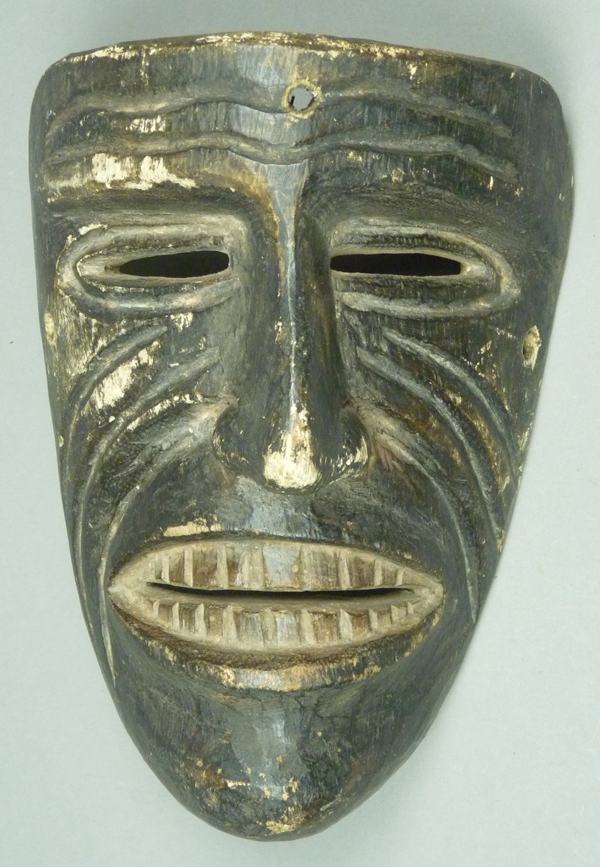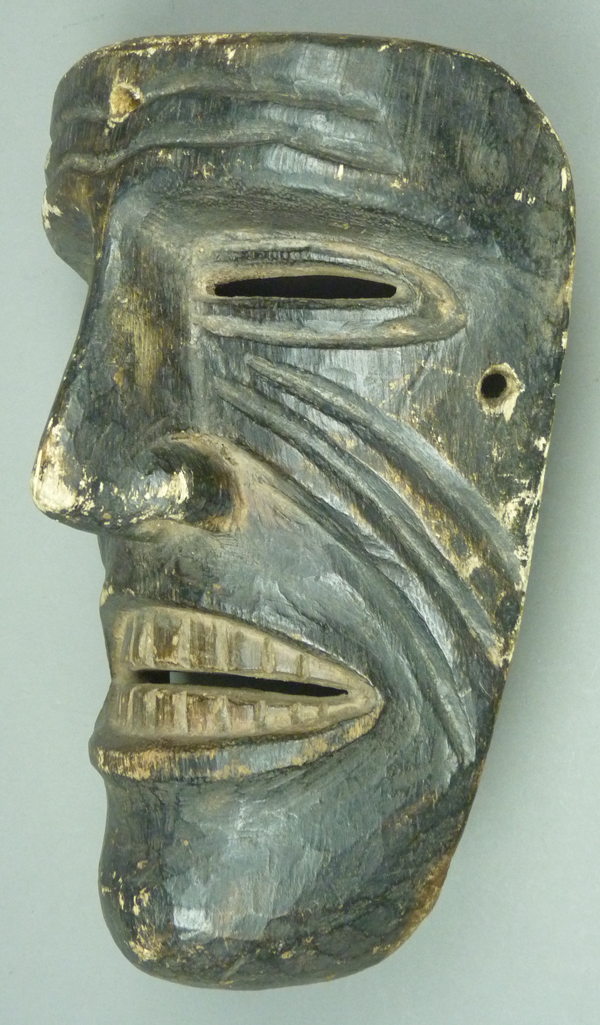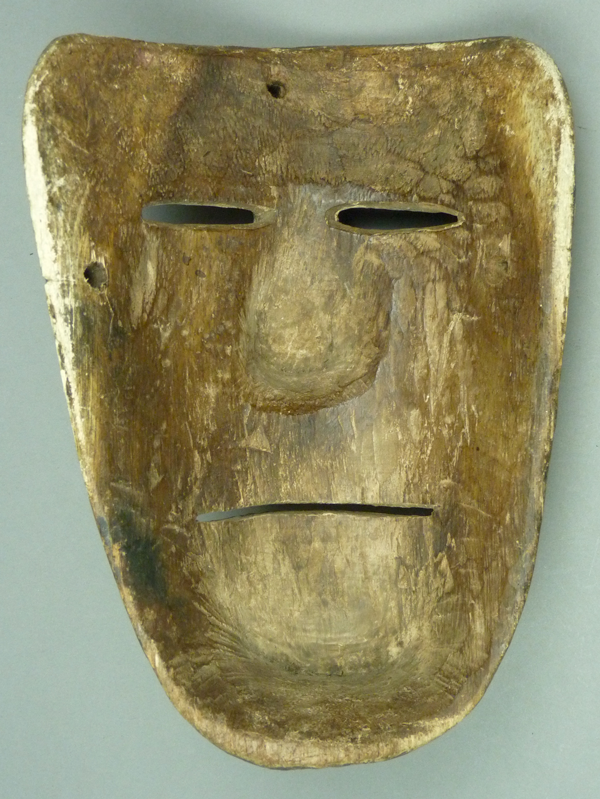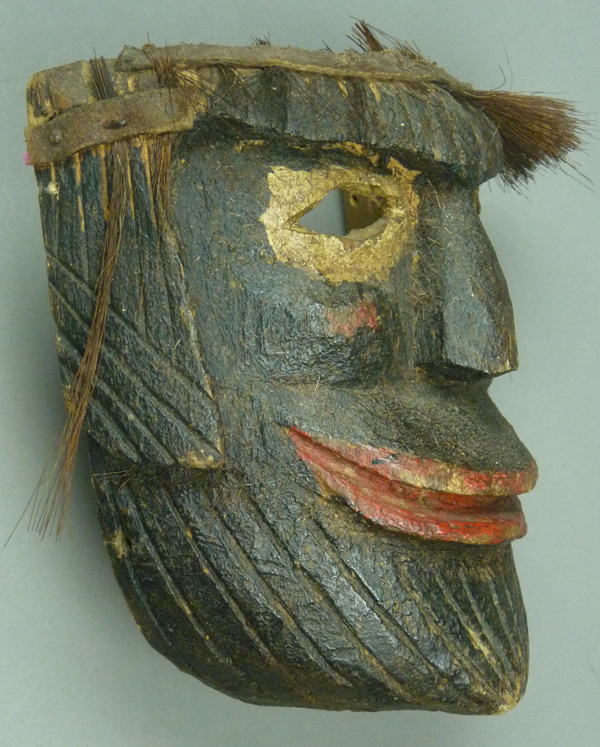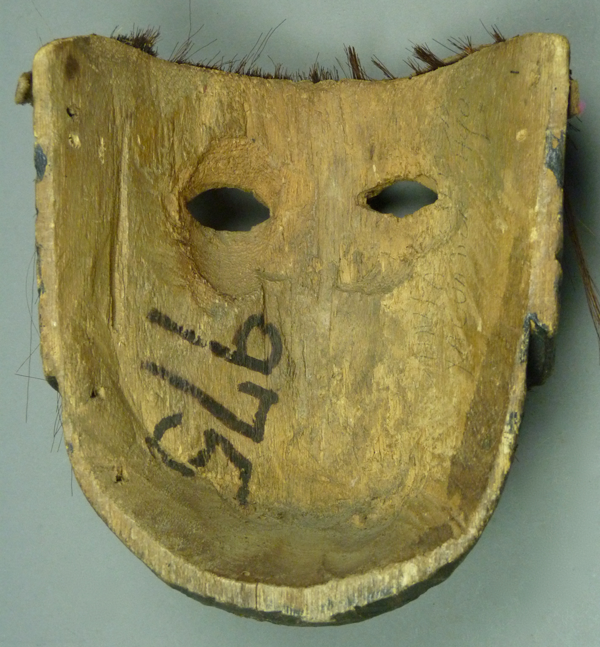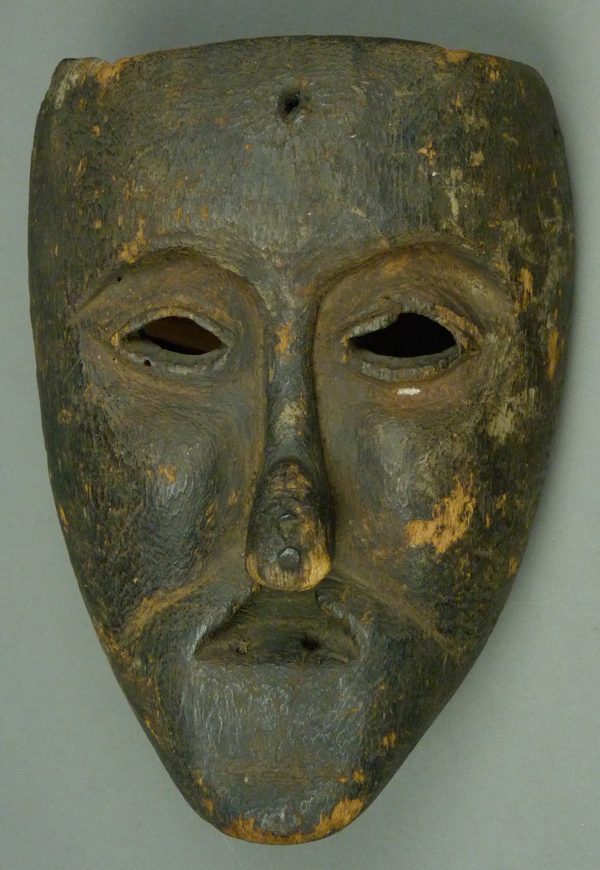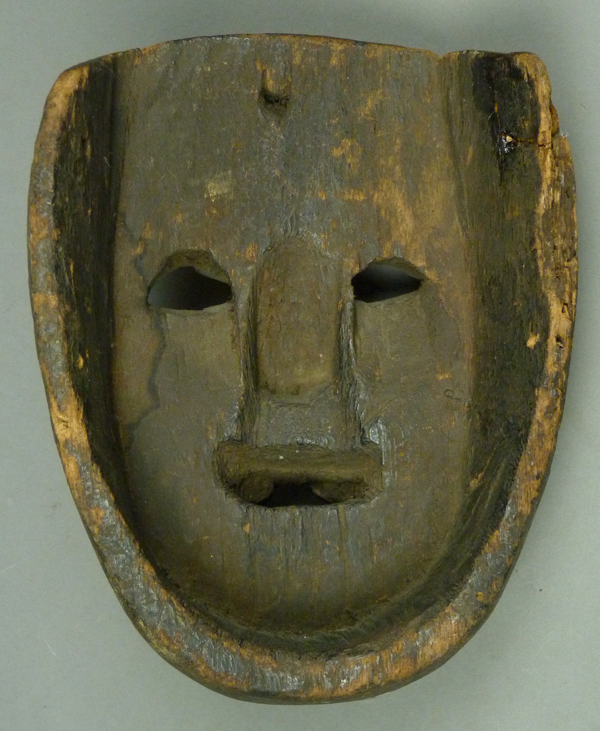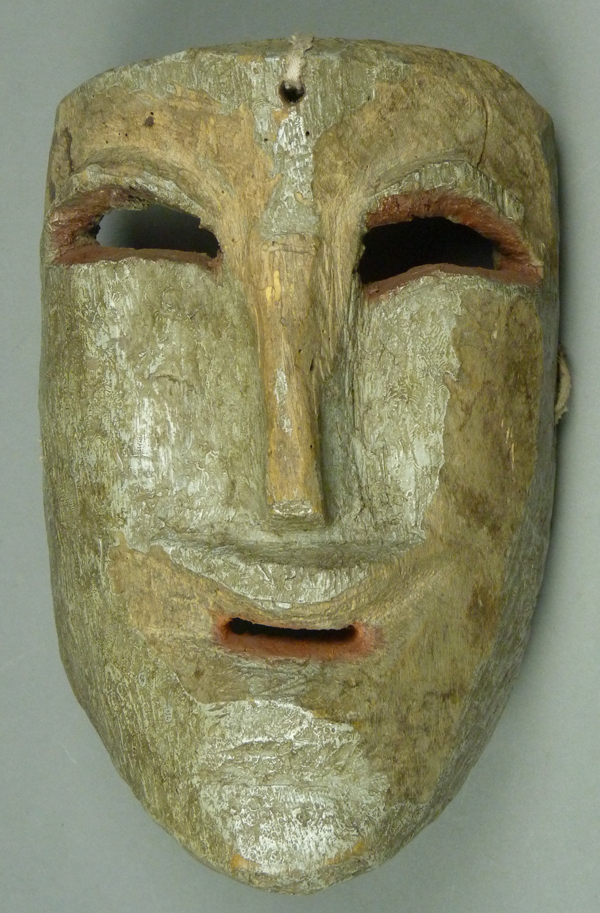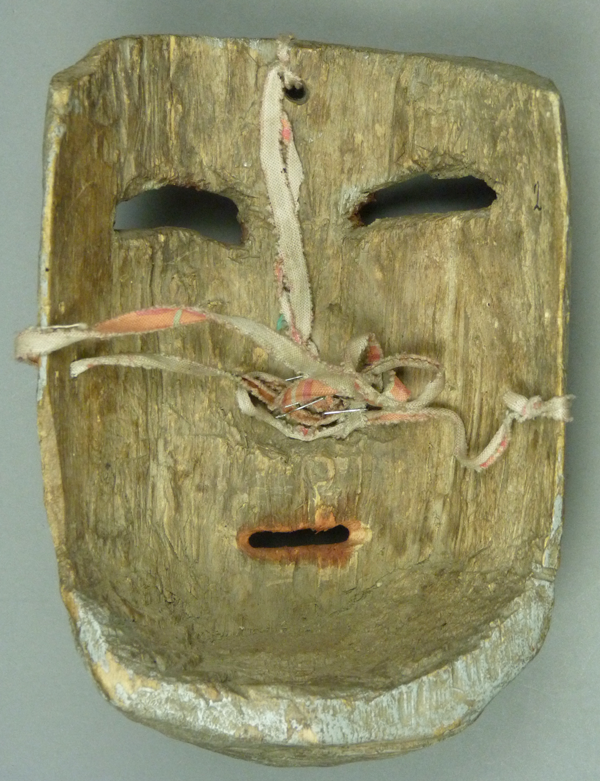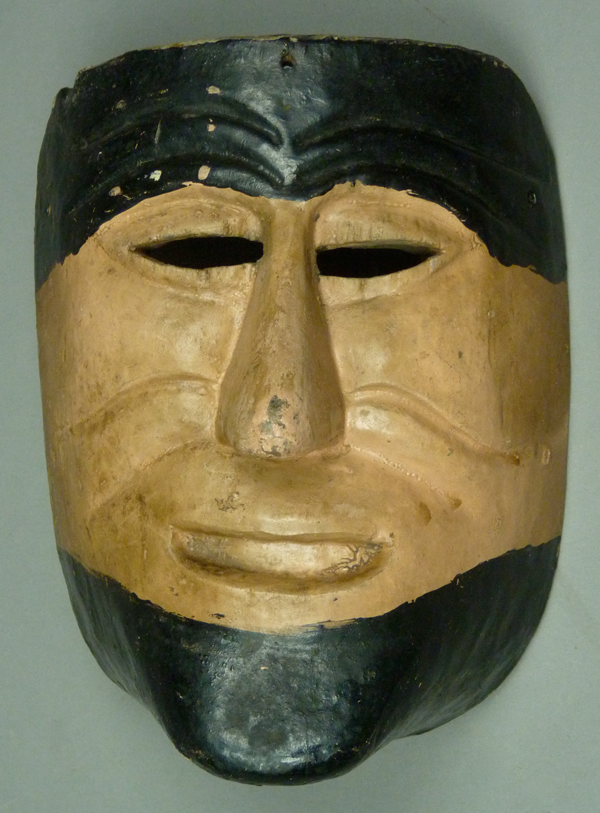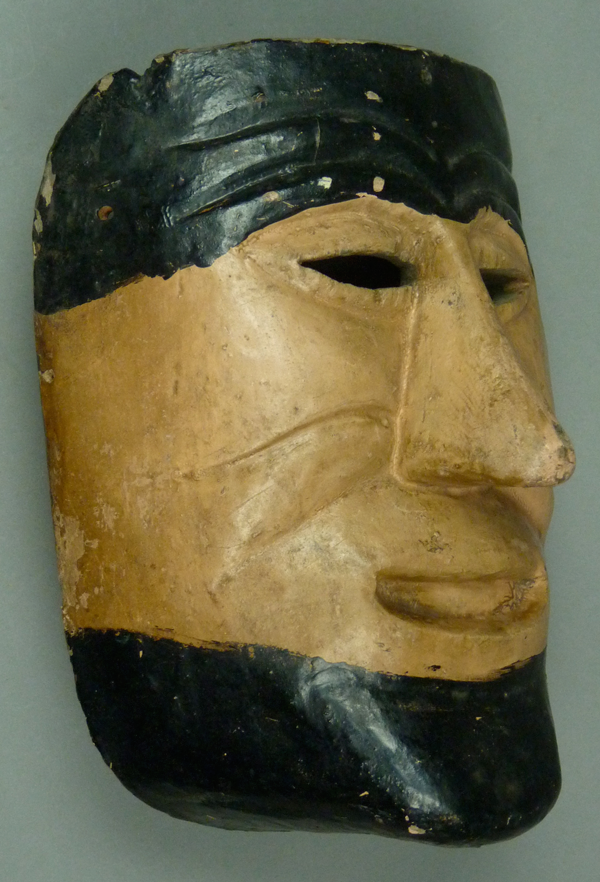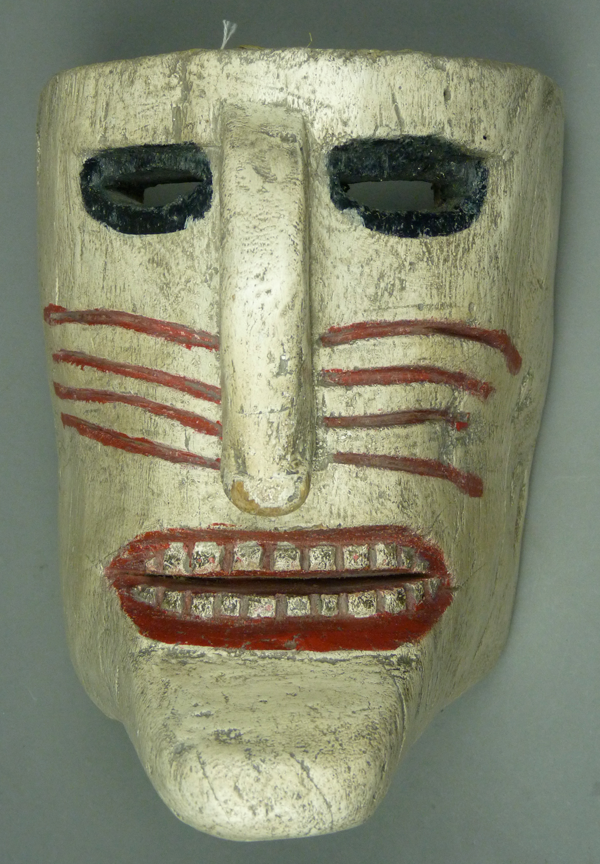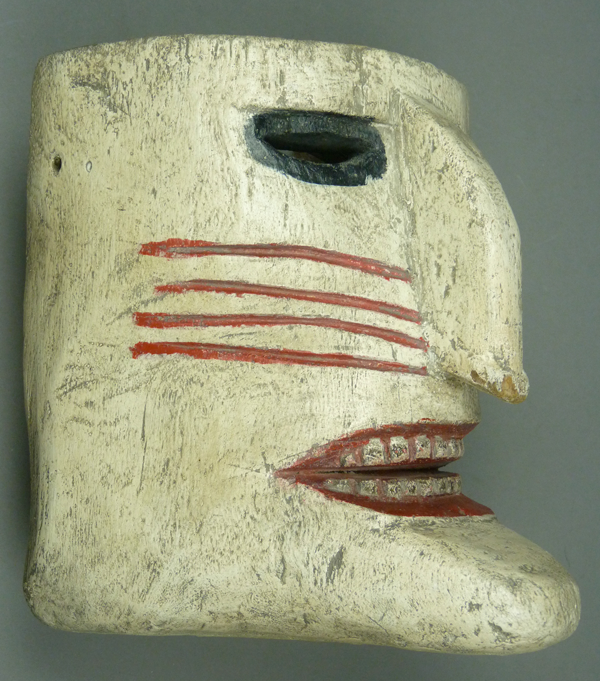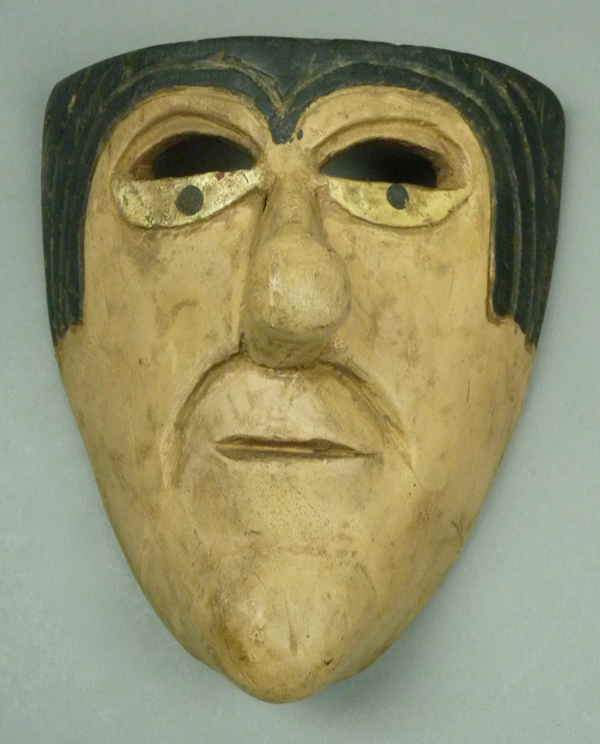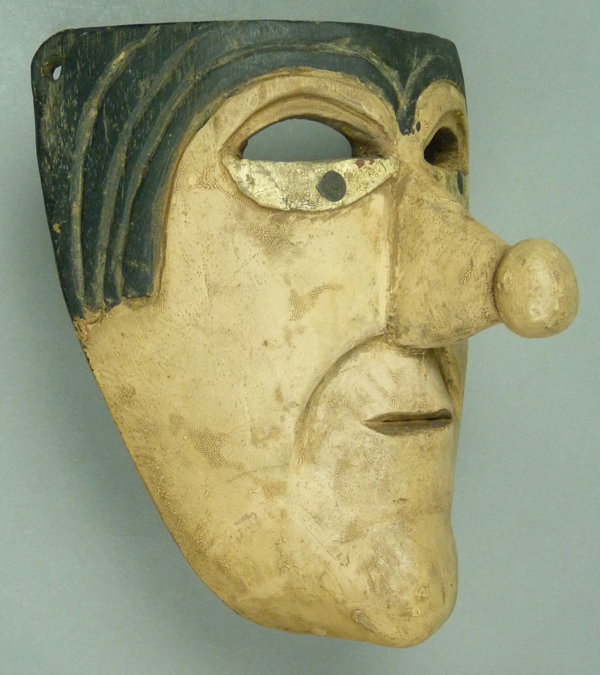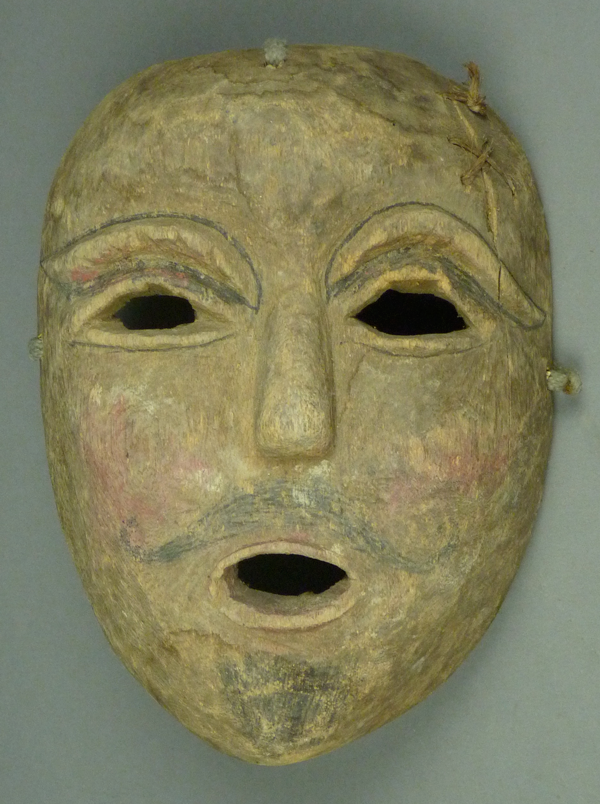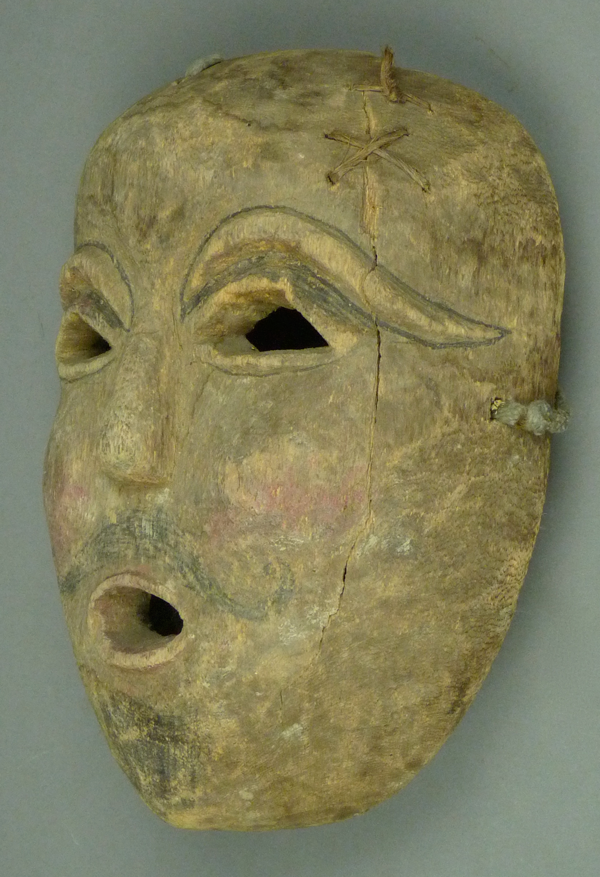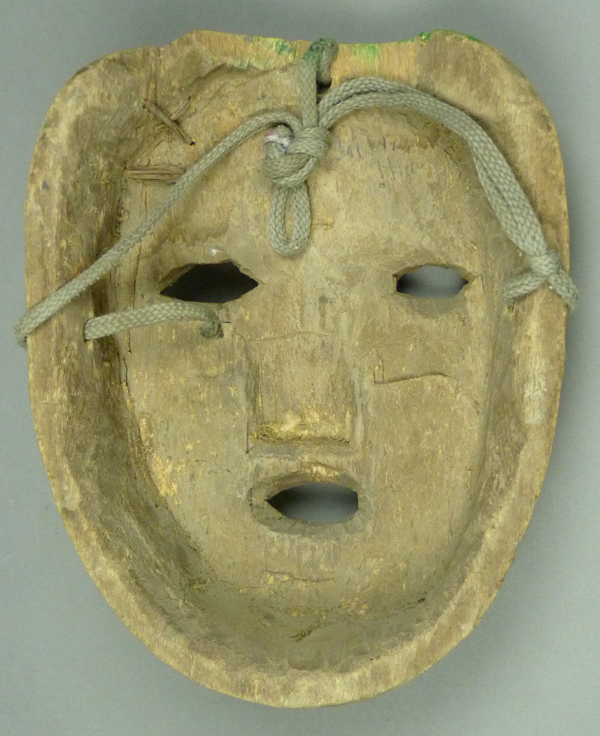This week I will further illustrate the variety to be found in human-faced Xantolo masks from the Huasteca region of Hidalgo and Veracruz, beginning with three masks that are painted black. This one reminds me of the Xipe style masks, although it lacks those typical features. I bought this mask from Sergio Roman Rodriguez of Mexico City in 1997.
This brooding, menacing mask would be highly effective on a dancer. With such eyes, the wearer would appear to be sleepwalking.
The eyes, nose, and mouth are delicately carved. This mask is 9¾ inches tall, 6½ inches wide, and 3¾ inches deep.
There is marked staining from use.
The second black Xantolo mask is highly unusual. Not only were the hairline and sideburns carved in relief, but then those features were augmented with applied bundles of animal hair. Like one of the stained Xantolo masks, this was has a broad smile. That the dead should be smiling is potentially disconcerting; does this smile reflect happiness or malevolence? I got this mask from Jaled Muyaes and Estela Ogazón in 1998. It came from Santa Teresa Yagualica, Hidalgo.
All of the areas of hair on this mask are grooved. Note the strange pointed hairline over the bridge of the nose.
It is 7 inches tall, 6 inches wide, and 3¼ inches deep.
The back is worn. This is yet another mask with a number from the 1981 UNAM show.
The next mask appears to be even older and more worn. The tip of the nose had broken off at some point and was nailed back in place. I bought this mask from Jaled Muyaes and Estela Ogazon in 1998.
This is a sad face.
It is 8 inches tall, 5¾ inches wide, and 3½ inches deep.
The back of this mask looks as old as the front.
This gray or silver mask has a stark simplicity that I admire. The nose is remarkably thin. I bought this mask from Jaled Muyaes and Estela Ogazón in 1999.
I suppose that I could have included this mask with the others that were specially colored to indicate death. There is the hint of a carved mustache.
It is 7½ inches tall, 5 inches wide, and 3 inches deep.
The back demonstrates moderate wear.
This next Xantolo mask is different from all the rest, both in color and expression. I got this from Jaled Muyaes and Estela Ogazón in 1997. It is from Mezcalapa, in the Municipio of Xochiatipan, Hidalgo.
In a way, this mask looks the most normal in appearance. This is another example of the realistic type of Xantolo masks, although it lacks the verve of the set I presented several weeks ago. I particularly like the elegant nose of this mask.
It is 8 inches tall, 6¼ inches wide, and 3¼ inches deep.
This is another old and worn back, with a stylized design. It too has a UNAM number, although this is hard to see.
The next mask is so crude in comparison to the last. It is also over-sized and menacing. I got this mask from René Bustamante in 1993. It was said to be a Xantolo from El Nante, Hidalgo, which is an Otomí community. In that community, white faced dancers perform during Carnaval, so this may be a Carnaval mask or one used for both Carnaval and the Day of the Dead. Here is a YouTube™ video about the Otomí Carnaval. Watch also for the first red Xantolo mask from last week’s post.
https://www.youtube.com/watch?v=-kzM10LbPTg
The nose has an unusual shape and the chin juts from the face like the prow of a ship. This mask is a sneering caricature, as if the pied piper of death, or some such character. He needs a slouch hat and a ragged cloak to complement his remarkable face.
This mask is 9 inches tall, 7 inches wide, and 7 inches deep.
This mask has had considerable use.
Moving, as usual, from one strange Xantolo mask to another, this one has a knob nose. I got this mask from Jaled Muyaes and Estela Ogazón in 1997. It is from El Nara, in the Municipio of Chicontepec, Veracruz.
It is difficult to avoid calling this nose phallic. Such a Xantolo must represent a clown character.
This mask is 7 inches tall, 6 inches wide, and 4 inches deep.
The comparison between the front and the back of this mask is startling.
The last of the masks in this group was never painted or even stained. I don’t believe that it was even sanded; it was competently carved and the rough edges have worn off with use. There has been very rudimentary decoration with a ball point pen, along with a mild application of pink color to the cheeks. However, it seems effective as the faded face of a dead person. I got this mask from Robin and Barbara Cleaver in 1994, but it was originally collected by Jaled Muyaes and Estela Ogazón.
I particularly like the oval mouth.
At one time the mask split down one side and it was lashed back together.
It is 9 inches tall, 7 inches wide, and 3 inches deep.
Both the front and the back of this mask are extremely soiled and stained from use. Above the right eye someone has written HDG (Hidalgo). There is another word above those letters that I can’t read.
Next week I will continue to discuss human faced Xantolo masks from the Huasteca, presenting some whose greatness rests on their primitive designs.

